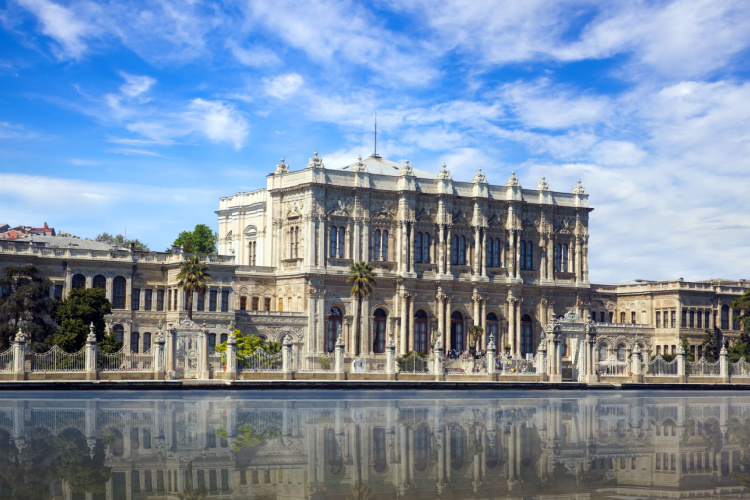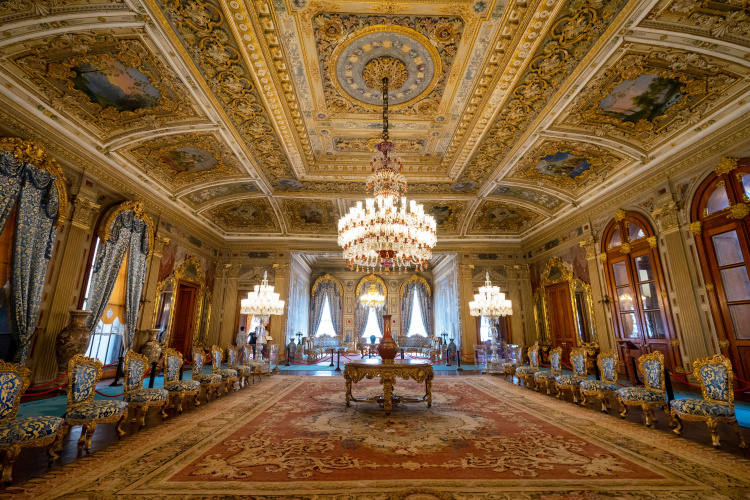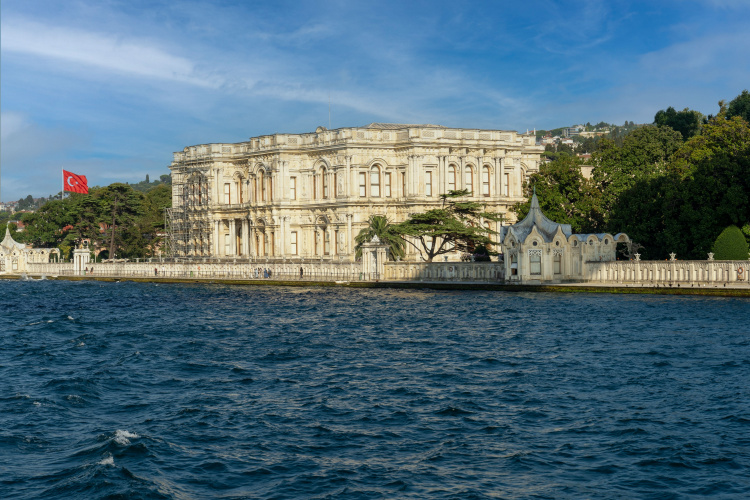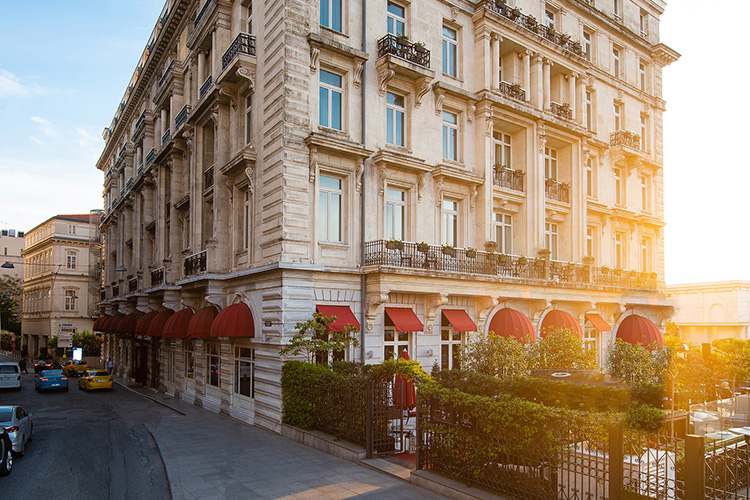Works of the Balyan Family, One of the Important Architects of the Ottoman Heritage, and Things They Wonder About It

Their signatures are on many buildings that make up the silhouette of Istanbul today. We are talking about the Balyan family, which had its name written in golden letters on 19th-century architecture. They blended classical Ottoman architecture with Western architecture with the palaces, mosques of rare beauty and European-style mansions that they embroidered on both sides of the Bosphorus. Would you like to get to know this family, which has been the Ottoman palace architects from generation to generation? Let’s examine the curious facts about the Balyan family and the details of their work together.
An Armenian Family Who Became Ottoman Palace Architects
Balyans are a family that, as Ottoman imperial architects (palace architects), took part in the construction of various works for 5-6 generations. Although most researchers say that they are an Armenian family from Kayseri, there are also those who say that they came to Istanbul from the Bali town of Maraş. The family, which was assigned to the construction of palaces, mosques, and mansions by the sultans of the period, went beyond the classical architectural understanding and introduced Western-style architectural elements to the Ottoman Empire. They had the opportunity to practice their art for generations by passing on their own architectural traditions and styles to the next generation. Dolmabahçe Palace, Çırağan Palace, Beylerbeyi Palace and Dolmabahçe Mosque, each of which we admire and visit today, are just a few of these works.
A Palace Identified with Both the Ottoman Empire and the Republic: Dolmabahçe Palace

The land where today’s Dolmabahçe Palace is located was, as the name suggests, a place where the sea was filled in the 17th century and used by the sultans as a picnic area. A wooden palace called Beşiktaş Beach Palace was built here and the palace continued to exist until the 19th century. After this wooden palace had expired, a new palace was ordered to be built by the sultan of the period, Abdülmecid, in the 19th century. The construction of this building, called Dolmabahçe Palace, was started in 1843 by Garabet Baylan and Nigoğos Balyan. The palace was completed in 1856. The building took its current shape with the Veliaht Dairesi (Crown Prince’s Palace), Saat Kulesi (Clock Tower) and Hareket Köşkleri (Hareket Pavilion) added later. The palace, which basically consists of three parts, consists of the harem where the sultan’s family lives, the greetings section where the state is governed, and the examination hall used for visits of foreign guests during holidays and ceremonies.
Hereke carpets, star porcelains, Baccarat crystals, gifts from foreign statesmen and paintings by Western painters were preferred for wall ornaments and decorations in the palace, which was designed by blending Western architectural styles with Ottoman culture and art elements. After the proclamation of the Republic, it was used as a working area by Atatürk for 4 years. Atatürk passed away at Dolmabahçe Palace at 09.05 on the morning of November 10, 1938.
An Elegant Palace Adjacent to Yıldız Park: Çırağan Palace
The name of Çırağan Palace is derived from the Persian word Çerağ, which means “full of light”. Although the construction of the palace started in 1857 during the reign of Sultan Abdülmecid, it was completed in 1871 during the reign of Sultan Abdülaziz.
Before Sultan Abdülaziz Çırağan Palace was built, he sent architects abroad to examine the Alhambra Palace and other structures built in Eastern styles. Although his aim was to have a palace built in the Eastern style, the plan of the palace changed 20 times and a palace built in the Western style emerged. When the idea of demolishing the Beşiktaş Mevlevi House next to the palace and adding it to the palace construction was considered bad luck among the public, Sultan Abdülaziz left this palace and settled back in Dolmabahçe.
Designed by Sarkis Balyan and his partner Kirkor Narsisyan, the palace was built on a total area of 80 thousand square meters. The palace, with Yıldız Park and Yahya Efendi Tomb behind it, has survived many events throughout history. The building, which was destroyed by a fire in 1910, was restored in the 1980s. The hotel was opened in 1990 and the palace was opened in 1992. During this period, Çırağan Palace hosted many famous names such as Pavarotti, Bill Clinton, Kofi Annan, and Sting.
Üsküdar’s Seafront Palace: Beylerbeyi Palace

The palace, built by the sea in the Beylerbeyi district of Üsküdar, was built by Architect Sarkis Balyan between 1861 and 1865, by the order of Sultan Abdülaziz. Due to Sultan Abdülaziz’s passion for the sea, the palace is located by the sea and has three additional pavilions. Yellow Pavilion, Stable Pavilion and Marble Pavilion are full of architectural details that make the palace unique.
The sea and ship paintings, which attract attention to some of the ceiling decorations and cartouches of the palace, are important in terms of showing Abdülaziz’s love for the sea. Foreign guests and statesmen of the period were hosted in the palace, which was built on an area of 2500 square meters. Names such as Austro-Hungarian Emperor Franz Joseph, German Emperor Wilhelm II, Nicholas I of Montenegro and French Empress Eugénie were hosted in the building, which was built as a summer palace.
The flooring of the 3-storey, 24-room palace, which bears traces of Western and Eastern styles, was brought from Egypt. Gold leaves, frescoes and handcrafted embroidery attract attention in the palace right away, which is furnished with Turkish-Hereke-made carpets, chandeliers made of French Baccarat crystal and vases made of Chinese, German, French, Japanese and Yıldız porcelain.
A Mosque with Extraordinary Architectural Features: Dolmabahçe Mosque
Built by the Baylan family and rising between Beşiktaş and Kabataş, this elegant mosque was commissioned by Bezmiâlem Valide Sultan, the mother of Sultan Abdülmecid. It is one of the buildings that form the silhouette of Beşiktaş with its long, thin minarets, round windows, square structure, and appearance resembling a peacock, distinguishing it from the classical Ottoman mosques. The building, consisting of two minarets with a single balcony, was built entirely using stone and marble. The interior of the dome was decorated entirely in Western style with oil painting and gilding and baroque-style decorations were placed on colored marbles on the mihrab and pulpit.
When Bezmiâlem Valide Sultan passed away before the construction of the mosque was completed, her son Sultan Abdülmecid had the mosque completed. The building was used as a mosque from 1853, when it was completed, until 1948. In 1948, the courtyard of the mosque collapsed during the construction of Dolmabahçe Square. The inscription was moved and placed on the qibla outer wall of the mosque. Built on a single central dome, the mosque still stands today as one of the rare mosques greeting the Bosphorus.
A Single-Storey Pavilion in Yıldız Park: Malta Pavilion
Today, there is a mansion in Yıldız Park, adjacent to Yıldız Palace, bearing the signature of the Baylan family. This structure, known as the Malta Pavilion or the Çadır Pavilion, was built with stones that were brought from Malta. The building, built by Sultan Abdülaziz in 1871, attracts attention with its ceiling decorations and gold-leafed mirror. The trial of Mithat Pasha, one of the statesmen of the time, was also held in the mansion, which hosted unsuccessful attempts at the throne.
The mansion, which was not used for a certain period of time, was transferred to Istanbul Metropolitan Municipality in 1941. The mansion, which was used as a patisserie for a certain period of time, was later opened as a museum. The palace, which underwent extensive restoration in 1995, is now used as a social facility.
You Can Stay at Pera Palace Hotel While Discovering the Works of the Balyan Family!

If you are going to visit Istanbul to discover the unique architectural works of the Balyan family, which left their mark on the history of Istanbul, how about topping off this experience with wonderful accommodation? Pera Palace Hotel offers you an unforgettable accommodation experience with its ideal location to these historical buildings. By staying at the hotel, you can visit the works of the Baylan family without any transportation difficulties. While browsing through the pages of history, you can create unforgettable memories in the fascinating atmosphere of Pera Palace Hotel, which has also witnessed history. You can taste the scrumptious flavors of French, Italian and Turkish cuisine and visit the museum room of Mustafa Kemal Atatürk, one of our most valuable guests who stayed at the hotel. You can contact Pera Palace Hotel right away and make a reservation for accommodation that will make your Istanbul trip unforgettable.
These articles may also be of interest to you:
The 10 Most Delicious and Special Meals of the Ottoman Palace Cuisine



